Affiliate Disclaimer
Some links in this article are affiliate links. We may earn a small commission if you make a purchase through these links, at no extra cost to you. We only recommend products we find useful to our readersAncient societies devised creative solutions to treat wounds and illnesses without modern medicine. By today’s standards, some of these methods may appear odd or harmful, yet many were surprisingly successful and have advanced our knowledge of medicine and health.
Nearly 5,000 years have passed since the invention of ancient healing techniques. Treating and avoiding illness, offering several daily routines, and combating wounds and infections.
In this article, we will explore the five traditional alternative medicine techniques that have endured over time. These effective methods offer comfort and encourage well-being. Let’s explore the knowledge of our ancestors and discover the therapeutic mysteries that still hold true in the modern world.
Read More: Healing with Doshas: How to Balance Vata, Pitta, and Kapha for Better Health
5 Ancient Alternative Medicine Practices
1. Ayurveda: Balancing Life Energies
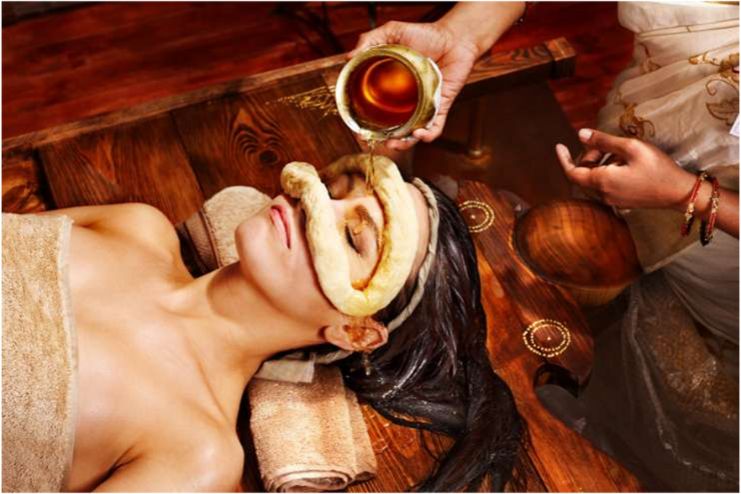
One of the oldest medical systems in the world, Ayurveda, has its roots in India and dates back more than 5,000 years. Understanding Ayurveda enables us to follow the natural rhythms and preserve mental and physical equilibrium.
Tridosha, which refers to the three basic energies or doshas—Vata, Kapha, and Pitta—is one of the key ideas in Ayurveda. Every dosha has a distinct function in preserving health and symbolizes many facets of nature. Being aware of these doshas, their interactions, and how to balance them may significantly improve your well-being.
Vata Dosha: Light, cool, dry, and variable, the Vata dosha is associated with air and space. Individuals with higher levels of Vata in their constitution frequently have dry skin and hair, and frail bones. They also speak and rush. Vata types who are out of balance may experience anxiety, constipation, low immunity, and weight loss.
Vata also influences personality. Generally speaking, Vata people are vivacious, adaptable, passionate, and imaginative communicators. However, under stress, they may also worry, become perplexed, and feel overburdened. They have trouble focusing or sleeping because their minds race.
Kapha Dosha: This dosha blends the elements of water and earth. As a result, Kaphas are often steady, hefty, calm, and serene. They use little energy, have smooth skin, and sturdy frames. But too much Kapha results in diabetes, weight gain, and mucous.
Kaphas has a calm disposition and manages stress effectively. However, when they are out of equilibrium, they want too much comfort, oppose change, and can become stuck in ruts. As a result, they lose motivation. Kaphas are prone to depression and sluggishness.
Pitta Dosha: The Pitta dosha represents fire and water. Pitta types typically have sharp features, oily skin, penetrating eyes, and a warm feeling. They communicate clearly and decisively and are competitive. Pittas make brave, vivacious pals when they are in balance.
But too much Pitta causes liver problems, rashes, and diarrhea. Pittas become highly angry, envious, and critical when out of balance.
Essential Ayurvedic remedies consist of:
Abhyanga: Ayurvedic massages are referred to as abhyanga. These massages are intended to benefit the skin while also calming the body and mind. During this complete-body ayurvedic treatment, the entire body is rubbed from head to toe. The purpose of a massage with the proper pressure is to facilitate blood flow throughout the body.
Panchkarma: Of all the standard ayurvedic therapies, Panchkarma is the one that most people know about. Panch, which means five, refers to five distinct actions carried out as part of the treatment. Vaman, Virechan, Basti, Nasya, and Raktamokshana. These include nasal rinsing, phlebotomy, vomiting treatments, herbal enemas, and laxatives.
These methods aid in removing undesirable chemicals from the respiratory system, esophagus, gastrointestinal tract, and blood vessels. Panchakarma aims to cleanse and de-stress the body while also eliminating all waste.
Vamanan: Medically induced vomiting, often known as vamanan, has several advantages despite initially appearing frightening. The goal is to rid the upper respiratory region of the body of excess Kapha dosha.
Shirodhara: Ayurvedic commercials mostly depict a patient lying down while a practitioner drizzles oil onto their forehead; this practice is known as Shirodhara. The treatment induces a state of awareness and relaxation, and the patient achieves mental and physical equilibrium.
Tharpanam: Ayurvedic beauty therapies’ natural and calming nature has earned them widespread recognition. One such remedy for the eyes is tharpanam. Nowadays, everyone is tied to a digital screen, whether for business or other reasons. This puts a great deal of strain on our eyes, which are relaxed by the Tharpanam ritual.
Ghee-based Ayurvedic compositions are applied to the eye sockets using lentil wraps fashioned into a ring around the eyes. The warmed formulation is poured into the ring for optimal efficacy, sealing the warmth. The process takes about half an hour.
Read More: Yoga for Sciatica Pain Relief
2. Traditional Chinese Medicine (TCM):
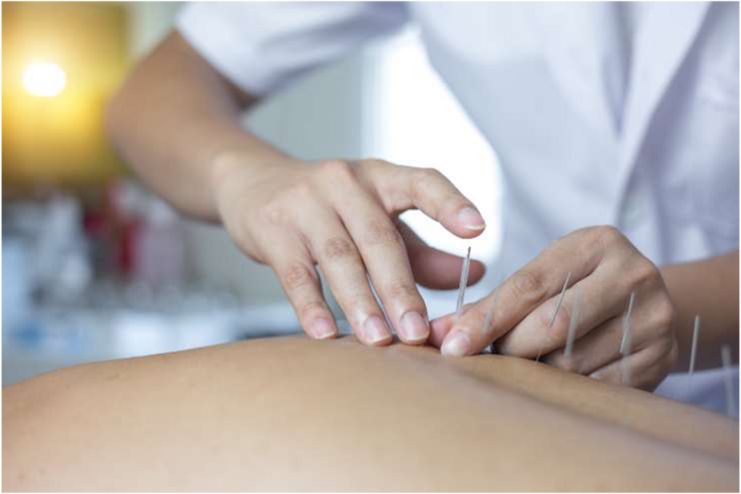
For over 2,000 years, people have employed Traditional Chinese Medicine (TCM), a comprehensive medical system, to identify, cure, and prevent diseases. To treat health issues, TCM practitioners use various psychological and/or physical techniques (like tai chi and acupuncture) along with herbal remedies.
According to the ancient Chinese, humans are interwoven with nature and subject to its forces, making them microcosms of the wider cosmos. One important idea is the balance between health and illness. Through individual-specific treatment, TCM aims to restore this equilibrium.
Practitioners also think everybody contains qi, pronounced “chee,” and a life force or energy. Qi must be balanced and free to flow for yin and yang to be balanced and the body to be healthy. Illness results from either too much or too little qi in one of the body’s energy channels, known as meridians, or from a blockage in the flow of qi.
To regain equilibrium, one must balance the body’s internal organs with the external elements of fire, water, wood, metal, and earth.
TCM uses the following types of practices:
- Acupuncture involves delicately inserting tiny needles into the skin. Acupuncture is frequently used to reduce stress, ease pain, and enhance general well-being. It may also alleviate conditions like migraines, arthritis, and digestive problems.
- Acupressure involves applying pressure to specific pressure points on the body. It is a TCM practice that promotes energy flow and eases pain. Though fingers are used instead of needles, it is comparable to acupuncture. Acupressure is frequently used to treat muscle tension, migraines, nausea, and stress.
- Tai chi moves slowly, and concentrate on your breathing. Tai chi helps lower stress and anxiety while enhancing mental focus, flexibility, and balance.
- Cupping is the use of heated cups to apply suction to your skin. Practitioners frequently use it to treat respiratory conditions, including asthma, pain, and inflammation. Additionally, some people use it to help with detoxification and relaxation.
- Herbs are primarily plant-based beverages, powders, and capsules. These herbal treatments strengthen immunity, balance the body’s energy, and treat conditions like sleeplessness, exhaustion, and digestive issues.
- Moxibustion is the burning of dried herbs close to the skin. It frequently treats menstrual irregularities, digestive problems, and chronic pain by warming the body and removing cold or stagnant energy.
TCM offers a comprehensive strategy with a range of outcomes. Researchers have not examined its practices as extensively as Western medicine. However, they have studied herbs and acupuncture more than other therapies.
3. Yoga: Union of Mind and Body
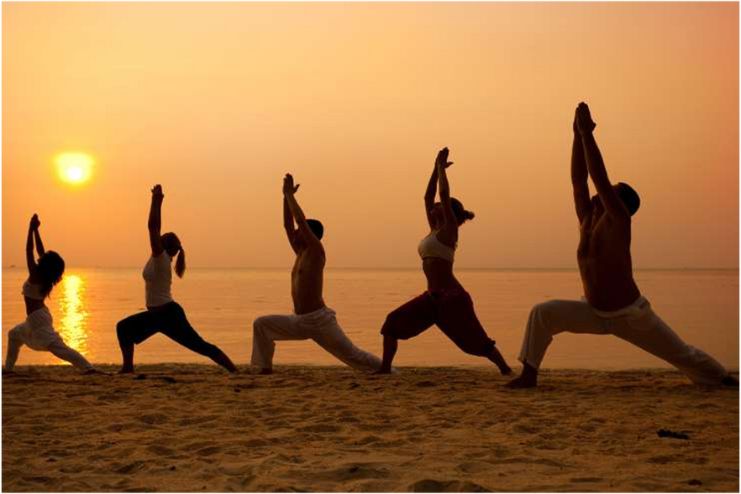
Yoga, an age-old discipline with Indian origins, is more than just physical activity. One definition of “yoga” is the art and science of leading a healthy lifestyle. It signifies that your body and mind are in perfect harmony and that you are becoming one with nature and your surroundings.
The Sanskrit term “yoga” is derived from the root “yuj,” which means “to join together” or “union.” The English word “communion” is comparable.
Most yoga teachings are passed down orally, and the history has many confusing and unclear moments. The earliest yoga texts were written on delicate palm leaves, which were prone to being lost or destroyed.
Yoga practice focuses on two key areas: increasing physical flexibility and promoting mental calm. Yoga is a condition of serenity in which the body, mind, emotions, and soul are balanced.
When your mind is at ease, balanced, and focused, you can understand yourself and other people better. Your understanding deepens, allowing you to view the world and your role with a sense of gratitude for who you are.
According to the 10,000-year-old Yogic texts, yoga practice results in the union of one’s unique consciousness with the higher Universal Consciousness.
The most popular forms of yoga include:
Vinyasa yoga: “Vinyasa” refers “to place in a special way,” which in this context refers to yoga poses. Vinyasa yoga, modified from Ashtanga yoga in the 1980s, is frequently regarded as the most athletic form of yoga.
Hatha yoga: The Sanskrit word “hatha” refers to all physical yoga postures. In the West, all other forms of yoga based on a physical practice, such as Ashtanga, Iyengar, etc., are simply referred to as hatha yoga.
Ashtanga yoga: In Sanskrit, ashtanga means “Eight Limb Path.” It is the source of vinyasa yoga, a flowing technique that connects movement and breath.
Yin yoga: This type of yoga is slowed down and involves seated poses maintained for extended periods. Its contemplative practice can also help one find inner calm.
Restorative yoga: This style of yoga emphasizes mental relaxation and slowing down after a demanding day. While this approach fundamentally emphasizes physical relaxation, restorative yoga aids in mental liberation and cleansing.
Read More: All You Need to Know About Restorative Yoga Poses
4. Traditional Herbal Medicine: Nature’s Pharmacy
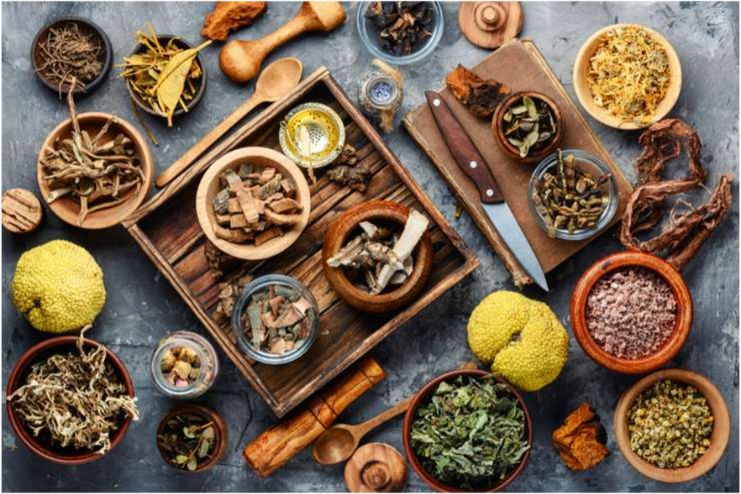
Traditional herbal medicine has long been a crucial component of healing customs in many cultures. It uses the abundance of nature to treat illnesses and advance well-being.
The use of plants in medicine dates back thousands of years as people experimented with various applications of the plants found in their environment. It wasn’t until much later that the medicinal qualities of plants were investigated more thoroughly and ultimately scientifically.
Herbal treatments provide a little bit of the calm essence of nature in today’s contemporary medical environment. They are valued for their deep connection to nature and low risk of adverse effects. By encouraging relaxation, strengthening the immune system, improving digestion, and treating a variety of conditions, from the common cold to chronic pain, these powerful plants can be used in conjunction with modern medicine.
Depending on the herb and preparation, herbalism can use seeds, berries, roots, leaves, fruits, bark, flowers, or entire plants. As was noted, herbs are essential to all traditional medicine used worldwide, including Iranian Islamic Medicine, Native American Medicine, Ayurveda, and Traditional Chinese Medicine.
- Turmeric (its main active ingredient, curcumin) is one of the most researched herbs in Ayurveda. Other herbs, such as ashwagandha, fennel, ginger, moringa, neem, and others, are also utilized in Ayurveda.
- Traditional Chinese medicine includes herbal, animal, and mineral therapies. Examples of herbs utilized in TCM include astragalus, mugwort, Asian ginseng, cordyceps, shiitake, and others.
- Some elements of Native American medicine and herbalism, including the use of tobacco or psychedelics in ceremonies, are usually known to non-Native Americans. However, the indigenous people of North America have much deeper traditional healing methods that still serve us today. Herbs, including aloe, dandelion, goldenseal, nettles, oats, sage, and others, are employed in Native American medicine.
Read More: Finding Balance: Yoga and Meditation for Seniors’ Physical and Mental Health
5. Meditation: Ancient Mind-Body Connection
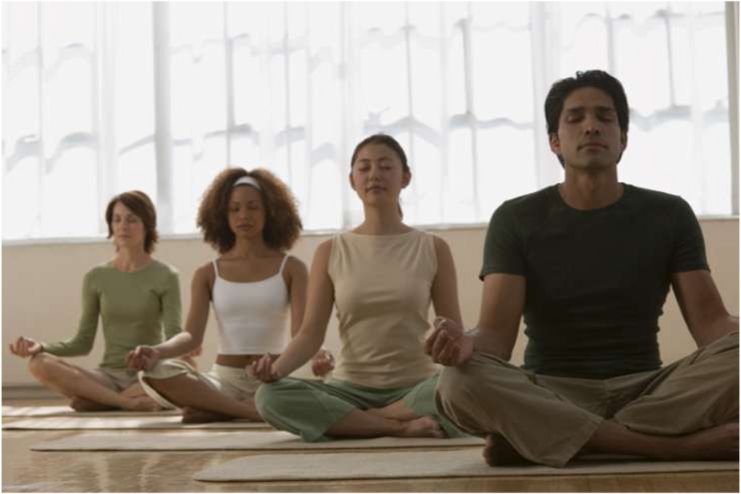
Meditation has existed since the beginning of recorded history. Its numerous advantages have contributed to its acceptance in contemporary times despite its roots in numerous civilizations and customs that date back thousands of years.
Meditation has gained popularity in many Western countries, particularly the USA. Growing research indicates that meditation has a number of health benefits, which have aroused interest in the medical community. Ancient India first used meditation during the Vedic era, and the old Vedic writings explain it.
Buddhist monks and ancient Indian sages employed meditation to develop self-awareness, inner serenity, and attentiveness.
Finding moments of calm can profoundly impact our health in a world that frequently seems like a tornado of stress and confusion. Meditation is an effective method for enhancing circulation and utilizing the mind-body connection. You can attain a profound state of relaxation by frequent meditation, which benefits your circulation in several ways:
Stress Reduction: Meditation’s benefits in reducing stress are well known. Your body’s stress response lessens during meditation, lowering the stress chemicals in your blood.
Improved Blood Flow: Meditation fosters tranquility, which improves blood flow throughout the body. If circulation is improved, organs and tissues receive a greater quantity of oxygen and nutrients.
Reduce Inflammation: Prolonged inflammation can harm blood vessels and impair healthy blood flow. Meditation has been associated with reduced levels of inflammatory indicators in the body, which may help maintain the health of your blood vessels.
Read More: 8 Surprising Benefits of Laughter Yoga: How Humor Can Enhance Health and Wellbeing
Conclusion
Ancient alternative medical techniques have supported human health over centuries and civilizations and have withstood the test of time. These ancient practices—Ayurveda, Traditional Chinese Medicine, yoga, herbal treatments, and meditation—continue to influence holistic wellness today because they are based on balance, energy flow, and nature’s healing potential.
These traditional methods provide a more profound, preventive approach that nurtures the mind, body, and soul, even though modern medicine is superior at diagnosis and acute care. The real magic is balancing the old with the new—using scientific discoveries and tried-and-true healing techniques for a more holistic approach to well-being.
References
- https://www.schooltube.com/the-ancient-art-of-healing-5-practices-that-still-work-today
- https://kindredspirit.co.uk/2024/09/05/5-ancient-wellbeing-practices-we-need-now-more-than-ever
- https://listverse.com/2017/06/05/top-10-ancient-practices-supported-by-science
- https://medium.com/@nazmiahamza/rediscovering-ancient-healing-practices-traditional-medicines-for-modern-ailments-722f93be0280
- https://www.banyanbotanicals.com/pages/ayurvedic-the-channel-of-the-mind
- https://www.banyanbotanicals.com/pages/ayurvedic-abundant-energy
- https://www.mskcc.org/event/understanding-your-body-ayurveda
- https://www.hopkinsmedicine.org/health/wellness-and-prevention/ayurveda
- https://www.hopkinsmedicine.org/health/wellness-and-prevention/chinese-medicine
- https://www.nm.org/conditions-and-care-areas/integrative-medicine/traditional-chinese-medicine
- https://www.nccih.nih.gov/health/traditional-chinese-medicine-what-you-need-to-know
- https://www.mountsinai.org/health-library/treatment/traditional-chinese-medicine
- https://www.webmd.com/balance/what-is-traditional-chinese-medicine
- https://yogainternational.com/article/view/yoga-means-union-but-union-with-what
- https://integralyogamagazine.org/yoga-as-union-2
- https://www.varsity.co.uk/lifestyle/25153
- https://www.mindbodygreen.com/articles/the-11-major-types-of-yoga-explained-simply
- https://yogamedicine.com/guide-types-yoga-styles
- https://thebrownmag.com/2021/06/21/yoga-for-the-union-of-mind-body-and-soul
- https://artsandculture.google.com/story/nature-s-pharmacy-the-discovery-of-medicinal-plants-oak-spring-garden-foundation/BAUBfFUPtvr_JA?hl=en
- https://campuspress.yale.edu/ledger/unlocking-natures-pharmacy-a-guide-to-herbal-remedies
- https://texaspainveinandvascular.com/the-mind-body-connection-meditation-for-improved-circulation
- https://lifecoachtraining.co/mind-body-connection-the-role-of-meditation-and-mindfulness
- https://pmc.ncbi.nlm.nih.gov/articles/PMC4895748
- https://debbygermino.medium.com/the-amazing-effects-of-the-mind-body-connection-b7cbbfdceb5c
- https://miayurveda.org/tharpanam-care-nourishment-eyes



















